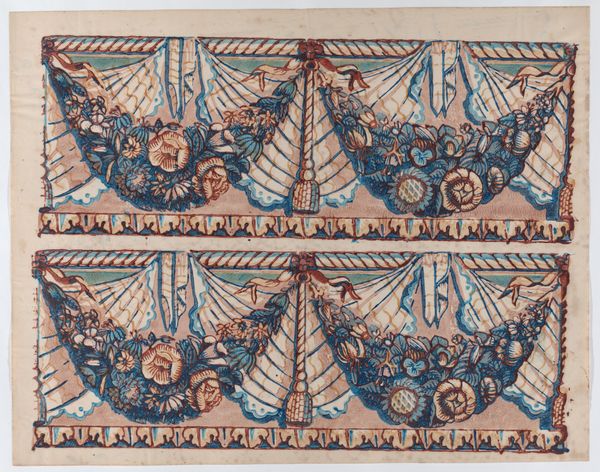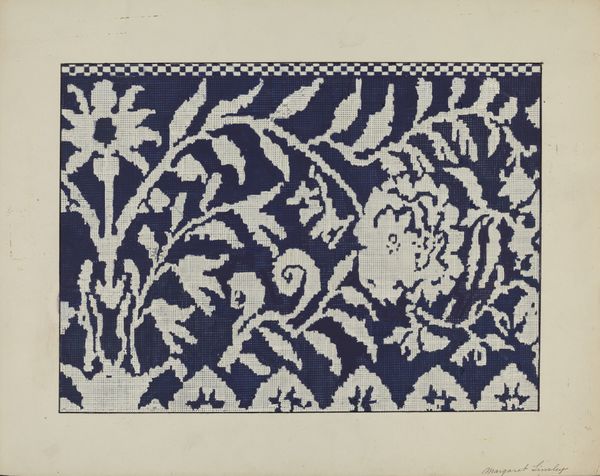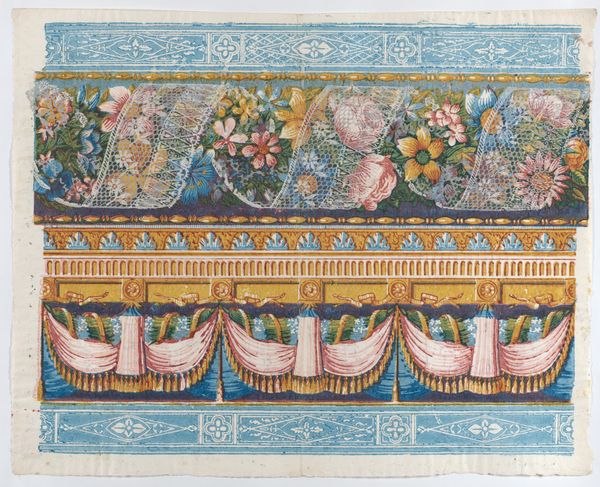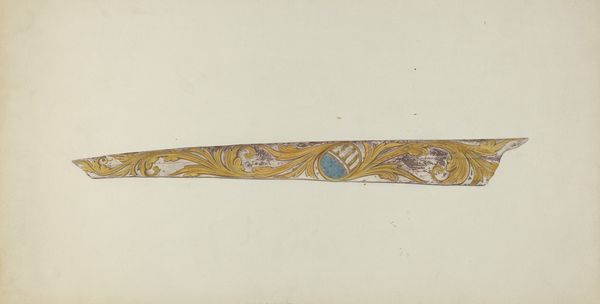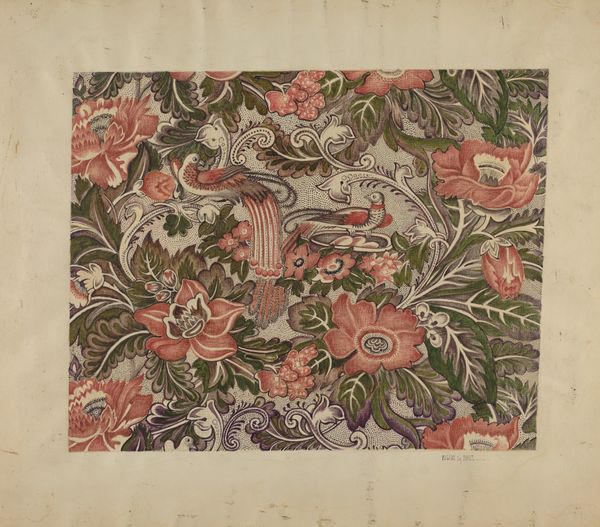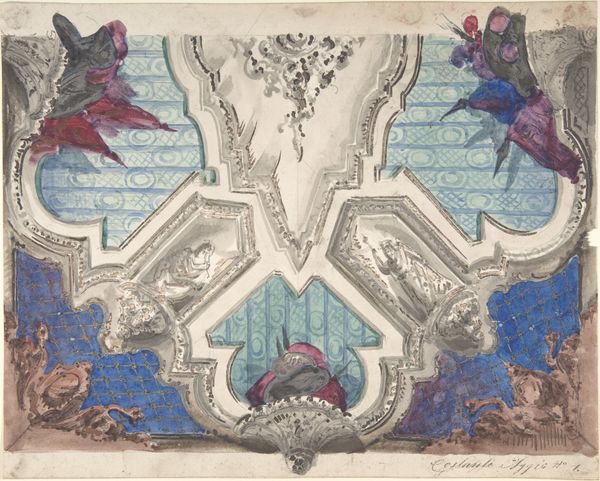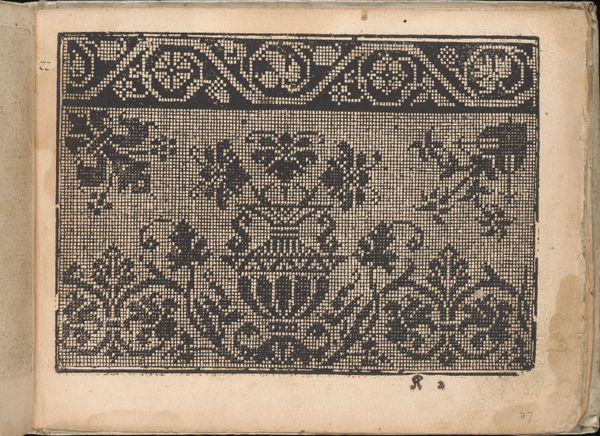
drawing, coloured-pencil, paper
#
drawing
#
coloured-pencil
#
paper
#
coloured pencil
#
decorative-art
Dimensions: overall: 38 x 55.8 cm (14 15/16 x 21 15/16 in.) Original IAD Object: 17" wide; 6 1/2" high
Copyright: National Gallery of Art: CC0 1.0
Curator: This is Frances Lichten's "Wall Paper Border," created around 1937. It's rendered with colored pencils on paper. What strikes you most about this piece? Editor: Immediately, it evokes a sense of subdued domesticity. The limited color palette, predominantly blues and muted reds, creates a strangely somber mood for something meant to be decorative and uplifting. Curator: Indeed. Lichten’s meticulous process, employing colored pencils, transforms this drawing into something resembling an industrial design proposal. Think of the labor involved in reproducing this border along an entire room's perimeter. What about the socio-economic implications of wall decor in the late 1930s? Editor: That’s a very good point. Wall coverings and decorations weren't merely about aesthetics; they were potent symbols of middle-class aspiration during the Depression. The faux formality, those classical swags and stylized flowers, almost mock aspirations toward upward mobility even when many families faced significant economic uncertainty. There's a quiet tension here. Curator: Exactly! And consider Lichten’s artistic choices. While seemingly traditional, the work deviates from a purely representational style. Note the somewhat blocky rendition, not necessarily mass-producible through contemporary technologies for textiles and wallpapers. What can it tell us about mass culture vs the artist's aspirations? Editor: I think that ambivalence also reflects Lichten's own position as an artist and likely a craftswoman, straddling a changing social and cultural landscape. How can a traditional aesthetic serve progressive, even radical, goals? This drawing hints at complex dialogues around identity. Curator: An astute observation, I must say. Thinking about materiality and application also allows one to think about design itself. It also lets us reflect upon its own limitations. What could wall covering tell about the anxieties around production at that time? Editor: Well, I'm seeing it as a really interesting snapshot of art intersecting with social forces and personal identity in a period of transformation. Curator: Agreed! Its humble materials invite so much historical curiosity. Editor: Absolutely; it provides insight into class, labor, and the complicated realm of decoration as a signifier.
Comments
No comments
Be the first to comment and join the conversation on the ultimate creative platform.
